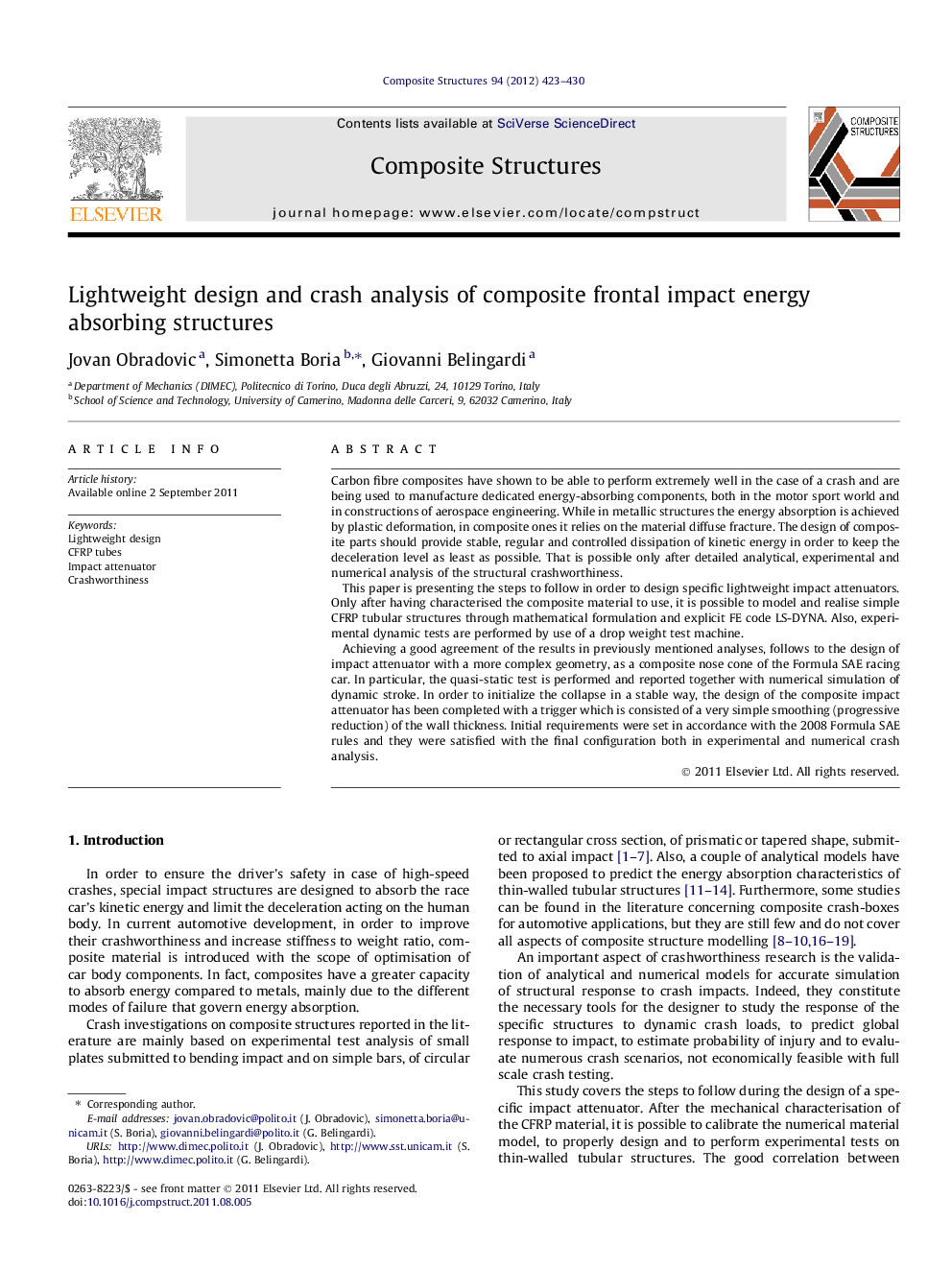| کد مقاله | کد نشریه | سال انتشار | مقاله انگلیسی | نسخه تمام متن |
|---|---|---|---|---|
| 252366 | 502962 | 2012 | 8 صفحه PDF | دانلود رایگان |

Carbon fibre composites have shown to be able to perform extremely well in the case of a crash and are being used to manufacture dedicated energy-absorbing components, both in the motor sport world and in constructions of aerospace engineering. While in metallic structures the energy absorption is achieved by plastic deformation, in composite ones it relies on the material diffuse fracture. The design of composite parts should provide stable, regular and controlled dissipation of kinetic energy in order to keep the deceleration level as least as possible. That is possible only after detailed analytical, experimental and numerical analysis of the structural crashworthiness.This paper is presenting the steps to follow in order to design specific lightweight impact attenuators. Only after having characterised the composite material to use, it is possible to model and realise simple CFRP tubular structures through mathematical formulation and explicit FE code LS-DYNA. Also, experimental dynamic tests are performed by use of a drop weight test machine.Achieving a good agreement of the results in previously mentioned analyses, follows to the design of impact attenuator with a more complex geometry, as a composite nose cone of the Formula SAE racing car. In particular, the quasi-static test is performed and reported together with numerical simulation of dynamic stroke. In order to initialize the collapse in a stable way, the design of the composite impact attenuator has been completed with a trigger which is consisted of a very simple smoothing (progressive reduction) of the wall thickness. Initial requirements were set in accordance with the 2008 Formula SAE rules and they were satisfied with the final configuration both in experimental and numerical crash analysis.
► Analytical, numerical and experimental research on composite impact attenuators.
► Simple tubular shape and more complex geometry for a Formula SAE car.
► Performed CFRP material characterisation tests to set values of LS-DYNA models.
► Good agreement between results achieved in terms of deceleration and deformation.
Journal: Composite Structures - Volume 94, Issue 2, January 2012, Pages 423–430